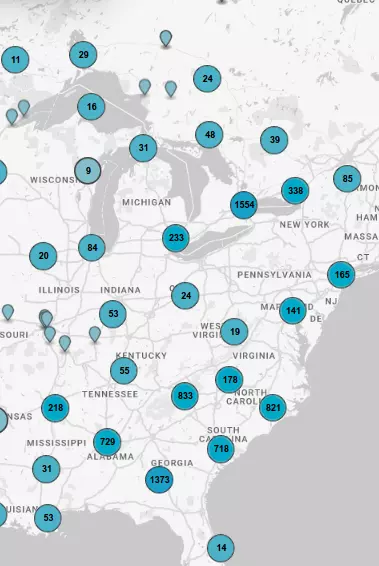Old Tugaloo Town
North of this marker, in the center of the lake, once stood an important Indian town. The area now marked by a small island was settled around 500 A.D. and occupied by Cherokee Indians around...
- lat34
Historic Traveler's Rest
Historic Traveler´s Rest was built upon land granted to Major Jesse Walton in 1785. Walton, a Revolutionary soldier and political leader, was killed by Indians near here in 1789. the Walton family...
- lat34
Stephens County
This County, created by Act of the Legislature August 18, 1905, is named for Alexander Hamilton Stephens, Vice President of the Confederacy. A state legislator and Senator he was elected...
- lat34
John McIntosh Kell
Near this site was the home of Captain John McIntosh Kell, Executive Officer of the Confederate cruisers Alabama and Sumter. After entering the United States Navy at the age of 17, he served in...
- lat34
Doc Holliday - Solomon Street Dental Office
Doc Holliday Solomon Street Dental Office John Henry “Doc” Holliday inherited a portion of this property and allegedly practiced dentistry here while in Griffin. Thought to be originally owned by...
- lat34
History of Griffin, Georgia
History of Griffin, Georgia The city of Griffin, Georgia, was founded on June 8, 1840 by General Lewis Lawrence Griffin, a former state legislator, General in the Georgia militia, railroad man...
- lat34
Old McIntosh Road
This tablet marks the Old McIntosh Road Part of the Three Notch Trail blazed by the Creek Indian Chief William McIntosh Slain in 1825, because of his friendship for the White Man Erected...
- lat34
Rotary International
Rotary International Centennial Project In recognition of the 100th anniversary of the founding of Rotary International, the members of the Rotary club of Griffin raised over $100,000, and in...
- lat34
Founding of Griffin
From a stump near the town spring, now covered by the embankment of the railroad, on June 8, 1840, Gen. Lewis Lawrence Griffin sold lots to the highest bidder, thus establishing the City...
- lat34
Spalding Grays
The Spalding Grays, as Co. D. 2nd Batt. Inf., was the first military unit from Spalding County to be mustered in to the Confederate Army. It was followed by 8 regular and several...
- lat34
Confederate Camp
Confederate Infantry Camp Stephens, named for Alexander H. Stephens, vice-president of Confederacy, was about ½ mile from here on McIntosh Road. Nearly all troops in the Confederate Army from...
- lat34
Confederate Camp Milner
Most Georgia troops for the Confederate Army were mobilized in Griffin. Camp Milner, the Cavalry Camp, was named for Ben Milner, prominent Spalding County man who gave financial aid in...
- lat34
Confederate Cemetery
Stonewall Cemetery is located on part of a plot given as a burial site by Gen. Lewis Lawrence Griffin when he founded Griffin in 1840. Several hundred Confederate and one Union soldier, casualties...
- lat34
Spalding County
Spalding County was created by Act of Dec. 20, 1851 from Fayette, Henry and Pike Counties. It was named for Thomas Spalding (1774-1851), native of Frederica. One of the earliest cotton and...
- lat34
Confederate Camp
Confederate Infantry Camp Stephens was named for Alexander H. Stephens, vice-president of the Confederacy. Nearly all troops in Confederacy Army from Georgia were mobilized here and at...
- lat34
Lewis Lawrence Griffin
Born in South Carolina, October 3, 1974, Lewis Lawrence Griffin moved to Georgia with his widowed mother in the early 1800´s. He fought in the Georgia Militia under General Daniel Newman...
- lat34
The City of Griffin
The first city government of Griffin, founded in 1840 by General Lewis Lawrence Griffin, was authorized in 1843 when the General Assembly of Georgia granted it a charter. The charter was accepted...
- lat34
Ringold Community
Older than Spalding County, Ringold Community grew around the two-story Ringold Masonic Lodge 90 building erected here in 1852. The lodge was established Oct. 31, 1849 at what became Walkers Mill...
- lat34
The Fannin Avengers
In 1846, when President Polk called for volunteers to fight against Mexico, a company of men organized promptly in Griffin. Calling themselves "The Fannin Avengers", they marched to Columbus where...
- lat34
The Orphan Brigade
At Bear Creek Station (Hampton), on Sept. 4, 1864, Brig. Gen. Joseph H. Lewis famous "Orphan Brigade" (2nd, 4th, 5th, 6th and 9th Kentucky Infantry) was relieved from assignment to Bates...
- lat34
